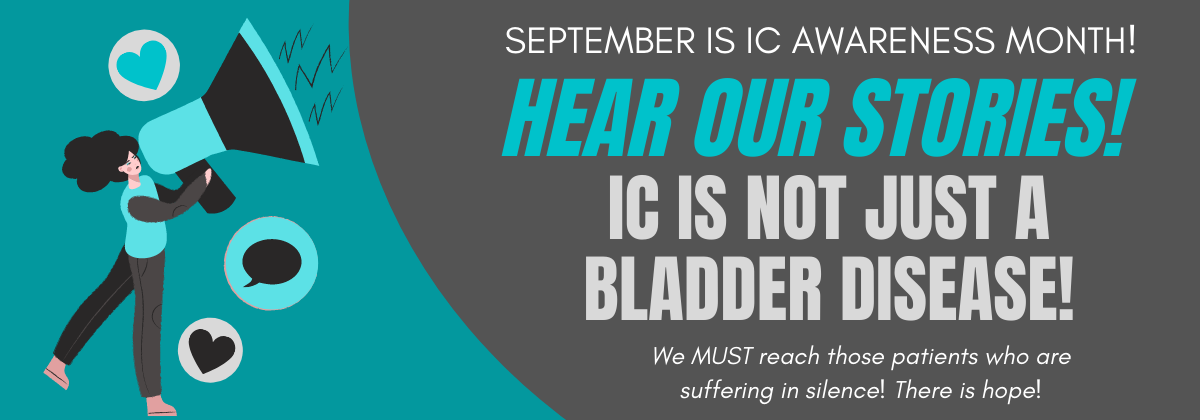Our gratitude to Barbara Quinn for writing a story on IC Awareness Month and the importance of the diet connection in the 9/25 edition of the Monterey Herald!
Barbara Quinn: The diet-bladder pain connection
 Before the month goes away, a reader reminds me that September is “Interstitial Cystitis Awareness” Month.
Before the month goes away, a reader reminds me that September is “Interstitial Cystitis Awareness” Month.
Say again?
That’s the point, says said reader. Interstitial cystitis is a condition with which millions suffer and few understand. And changes in the diet can sometimes relieve symptoms of this puzzling disorder.
So let’s try to understand. According to the National Institute of Diabetes and Digestive and Kidney Diseases, IC is “a condition that causes discomfort or pain in the bladder and a need to urinate frequently and urgently.” And at the risk of too much information, interstitial cystitis is also known as bladder pain syndrome, or BPS.
This condition is more common in women than in men. It can be tricky to diagnose since its symptoms are similar to a bladder infection, although IC is not an infection. It can be tricky to treat as well.
So, what does this have to do with nutrition? Experts have observed that certain foods may trigger unfortunate symptoms in some people with IC. And while there is no specific “diet” to treat IC, some sufferers report certain foods to be more abrasive to the bladder than others.
Foods most commonly reported to be bothersome for people with IC include alcohol, artificial sweeteners such as aspartame and saccharine, coffee (even decaf in some people), citrus and cranberry juices, hot peppers, carbonated soda and spicy foods. Others add chocolate, tea and tomatoes to the list of irritating foods.
Not everyone has problems with these foods, however.
How to know? It’s called the “elimination diet.” Eliminate from your diet — for at least a month — any food you suspect to be a potential problem, some experts suggest. Then one by one, add these foods — no more than one food each week — back into your diet. And track which, if any, food worsens symptoms.
The goal is not to eliminate foods willy-nilly or make yourself miserable because you can’t eat anything. Most patients with IC have a small list of “do nots” and a bigger list of “usually OK” foods based on their symptoms. The best diet to relieve the painful symptoms of interstitial cystitis is one that includes a balanced variety of foods and essential nutrients, say nutrition experts.
“We do not know exactly why some foods bother most IC patients and other foods do not,” says registered dietitian Julie Beyer, of the Interstitial Cystitis Association. “The diet-IC connection becomes even more mystifying when we observe that certain foods that bother one patient do not bother others.”
The good news, she says, is that researchers are taking a closer look at the treatments we have for IC — including diet. And we will have better answers in the near future. Good to be aware.
Barbara Quinn is a registered dietitian and certified diabetes educator at the Community Hospital of the Monterey Peninsula. Email her at bquinn@chomp.org.
